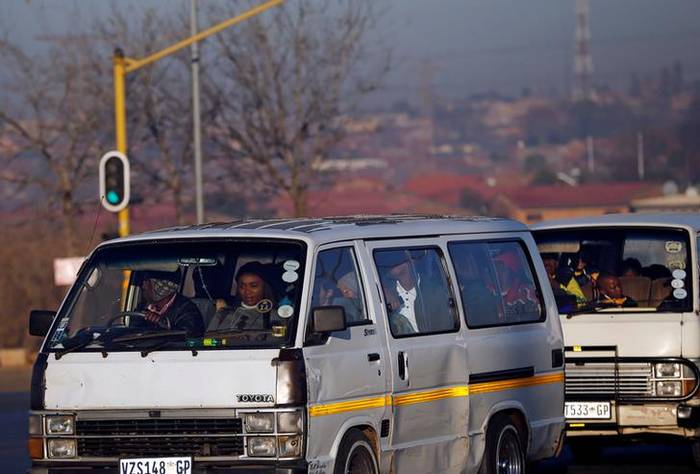
|

|
|
|
|
Dear reader,
A lack of accessible, affordable transport disproportionately affects women and girls everywhere.
In South Africa, a recent spate of violence in the Western Cape province, fuelled by long-standing territorial disputes between rival taxi services, has forced women to walk to work, putting them at risk of being assaulted as they walk back home at night.
Apartheid spatial planning that physically divided cities according to racial groups left many Black and mixed-race South Africans on the outskirts of town and far from economic opportunities, reports correspondent Kim Harrisberg.
"I know of women walking up to 50 km (31 miles) through the night, or in the rain, to get to work. If they don't go, they bear the brunt of having to look in the eyes of hungry children," said Joanie Fredericks, a women's rights activist.
|

|
| Commuters are seen inside a minibus taxi as they make their way to work, in Soweto, Johannesburg, South Africa, June 15, 2017. REUTERS/Siphiwe Sibeko |
| |
|
Meanwhile, women in Afghanistan fear losing their businesses and hard-won gains of the last 20 years - from education to freedom of movement - as the Taliban advance, particularly in cities such as Kabul, Herat and Mazar-i-Sharif.
Women own almost 60,000 businesses, predominantly in Kabul, including restaurants, salons and handicrafts shops – and their future is uncertain, reports Shadi Khan Saif.
"My resolve to promote women's businesses, create jobs for them and see a self-reliant Afghanistan is keeping me here and fighting for survival," said Marzia Hafizi, who has an apparel shop in Kabul.
|

|
| Marzia Hafizi checks her phone at her boutique Lora in Kabul, Afghanistan on July 12, 2021. Thomson Reuters Foundation/Shadi Khan Saif |
| |
|
And finally, machine learning, big data and forecasting are being put to use to help deploy scarce fire resources as efficiently as possible as more intense and deadly wildfire seasons stretch firefighting resources to the limit.
Analytical tools that combine local firefighter know-how with advanced spatial analytics can help teams plan their control lines and plans of attack even before a fire breaks out, reports correspondent Avi Asher-Schapiro.
"People make bad decisions under stress - they can't crunch all this data on their own. This is about reducing the uncertainty, and helping firefighters make better decisions," said Brad Pietruszka, a fire manager at the San Juan National Forest.
Before you go: Do you work on issues related to climate change, technology, inequality or ESG? We're launching a new website for professionals like you - and we need your input.
Sign up here to receive two weeks of TRF stories directly in your inbox, rate our articles, and help shape the future of our reporting.
See you next week!
|
|
|
|
|

|
| Have a tip or an idea for a story? Feedback on something we’ve written? |
| Send us an email |
| If you were forwarded this newsletter, you can subscribe here. |
| Like our newsletter? Share it with your friends. |
|
|
|
|
This email is sent to you by Thomson Reuters Foundation located at 5 Canada Square, London, E14 5AQ.
Thomson Reuters Foundation is a charity registered in England and Wales (no. 1082139) and a company limited by guarantee registered in England and Wales (no. 04047905). Our terms and conditions and privacy statement can be found at www.trust.org.
You are receiving this email because you subscribed to the Thomson Reuters Foundation Climate Newsletter. If you do not wish to receive future newsletters, please unsubscribe or manage your subscriptions below.
|
Manage your subscriptions |
Unsubscribe from this newsletter
Unsubscribe from all TRF communications
|
|
|
|
|
|